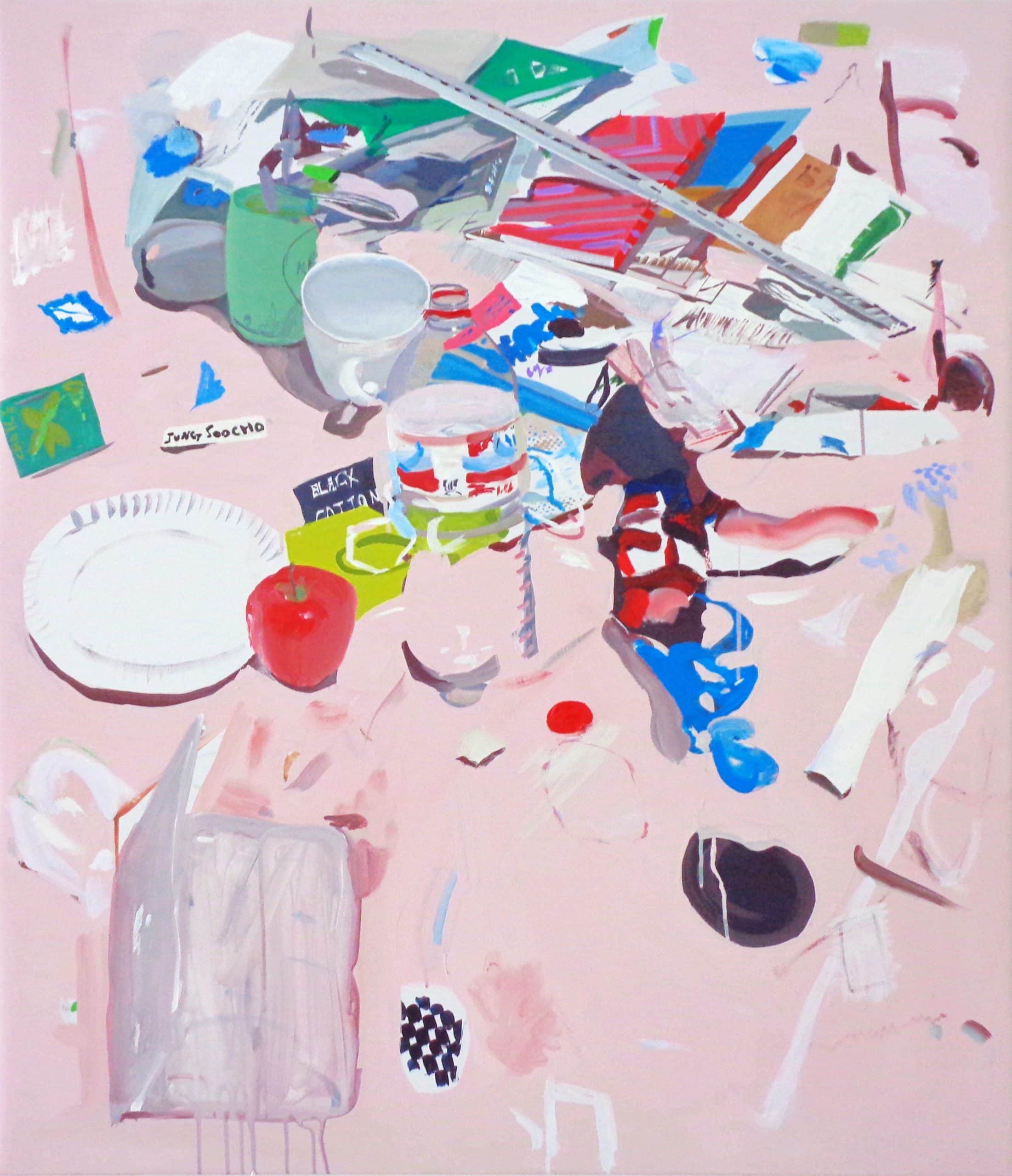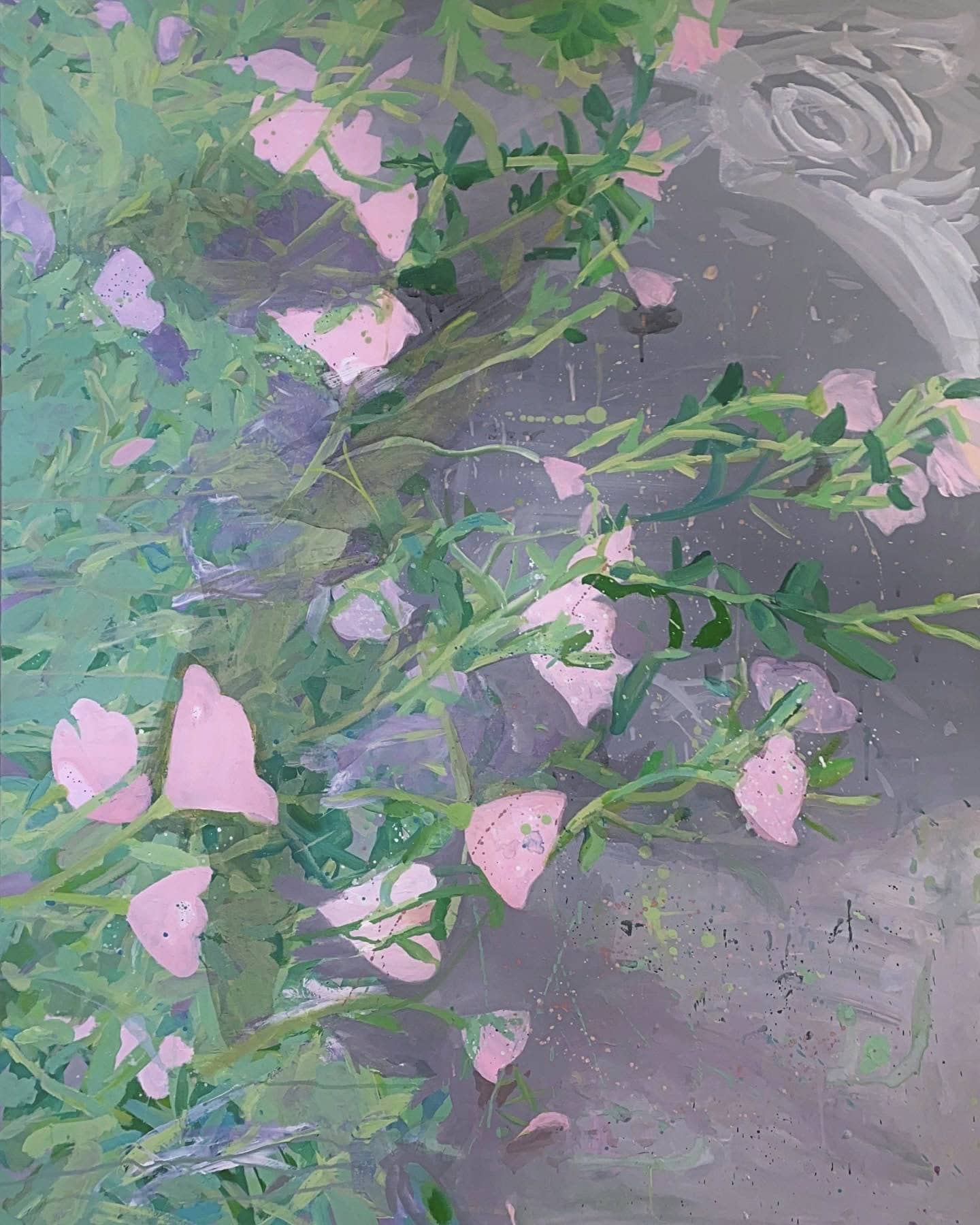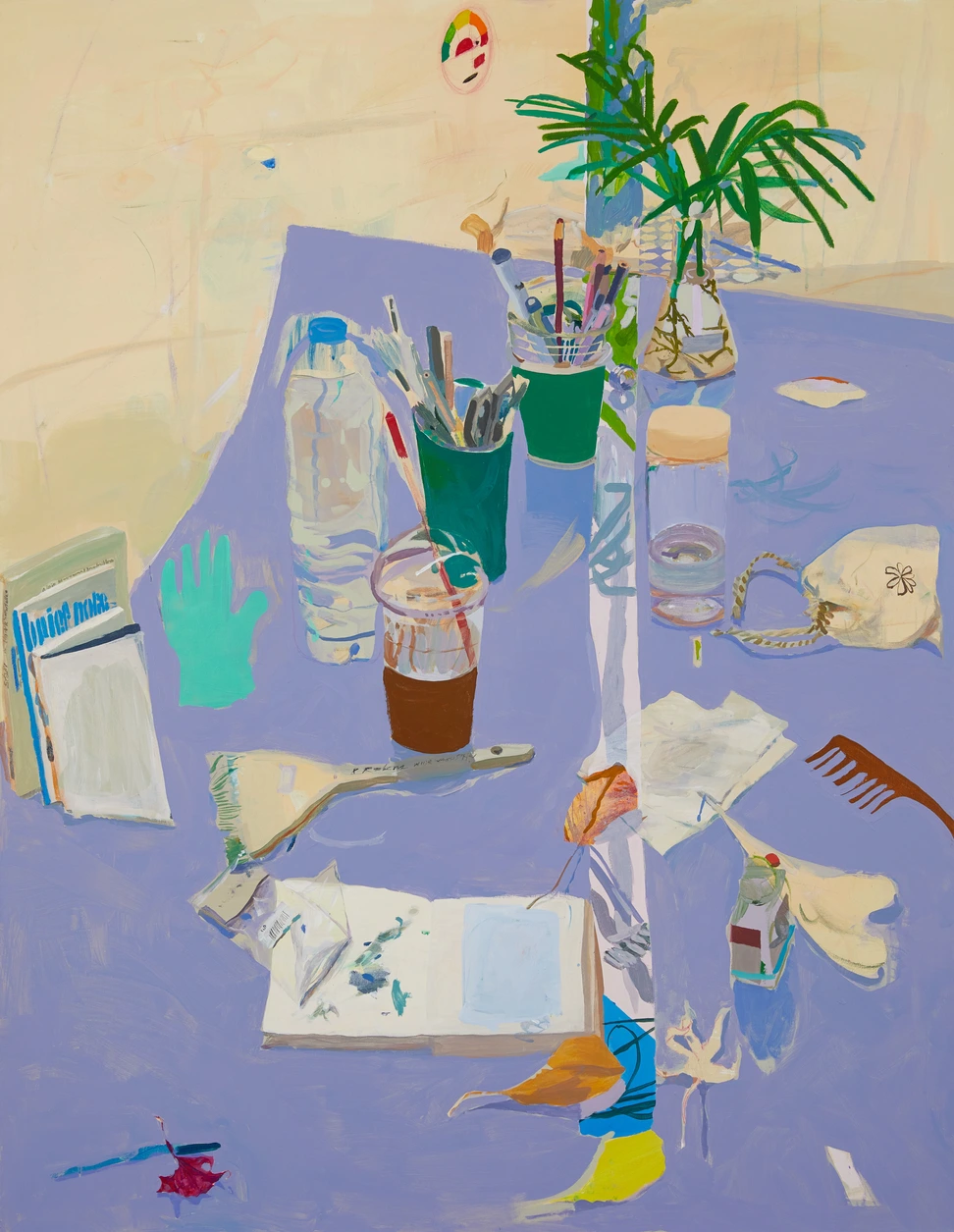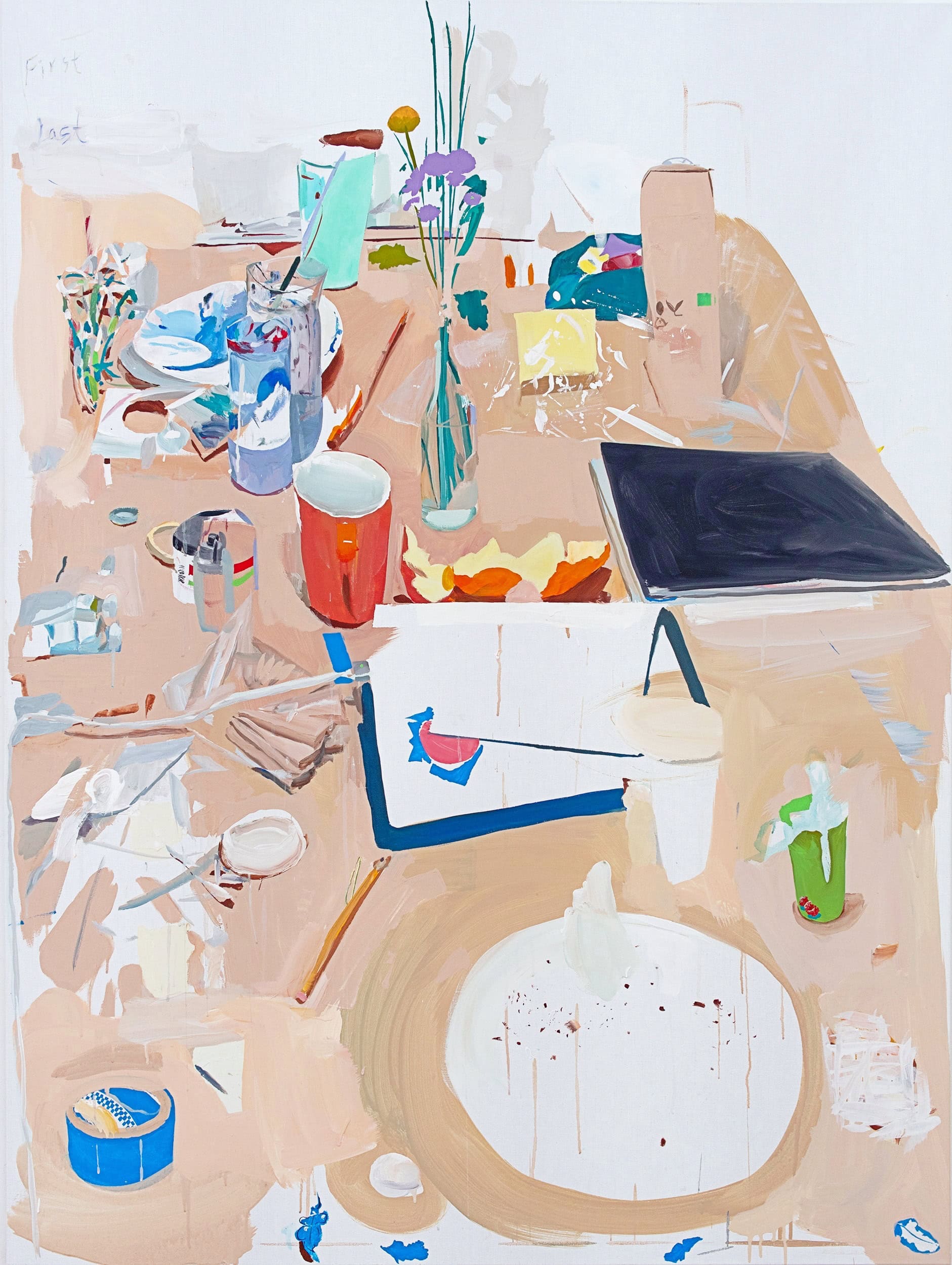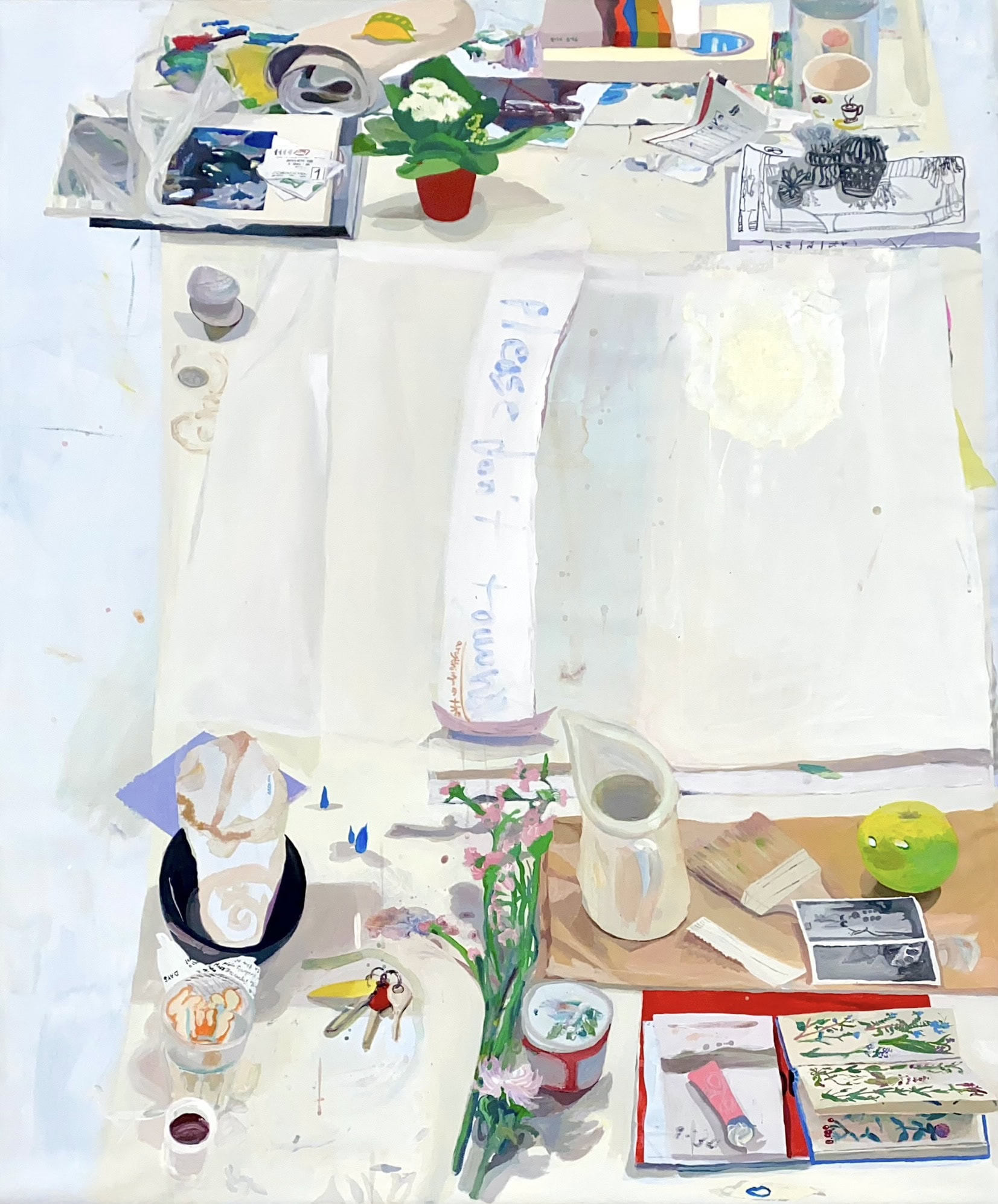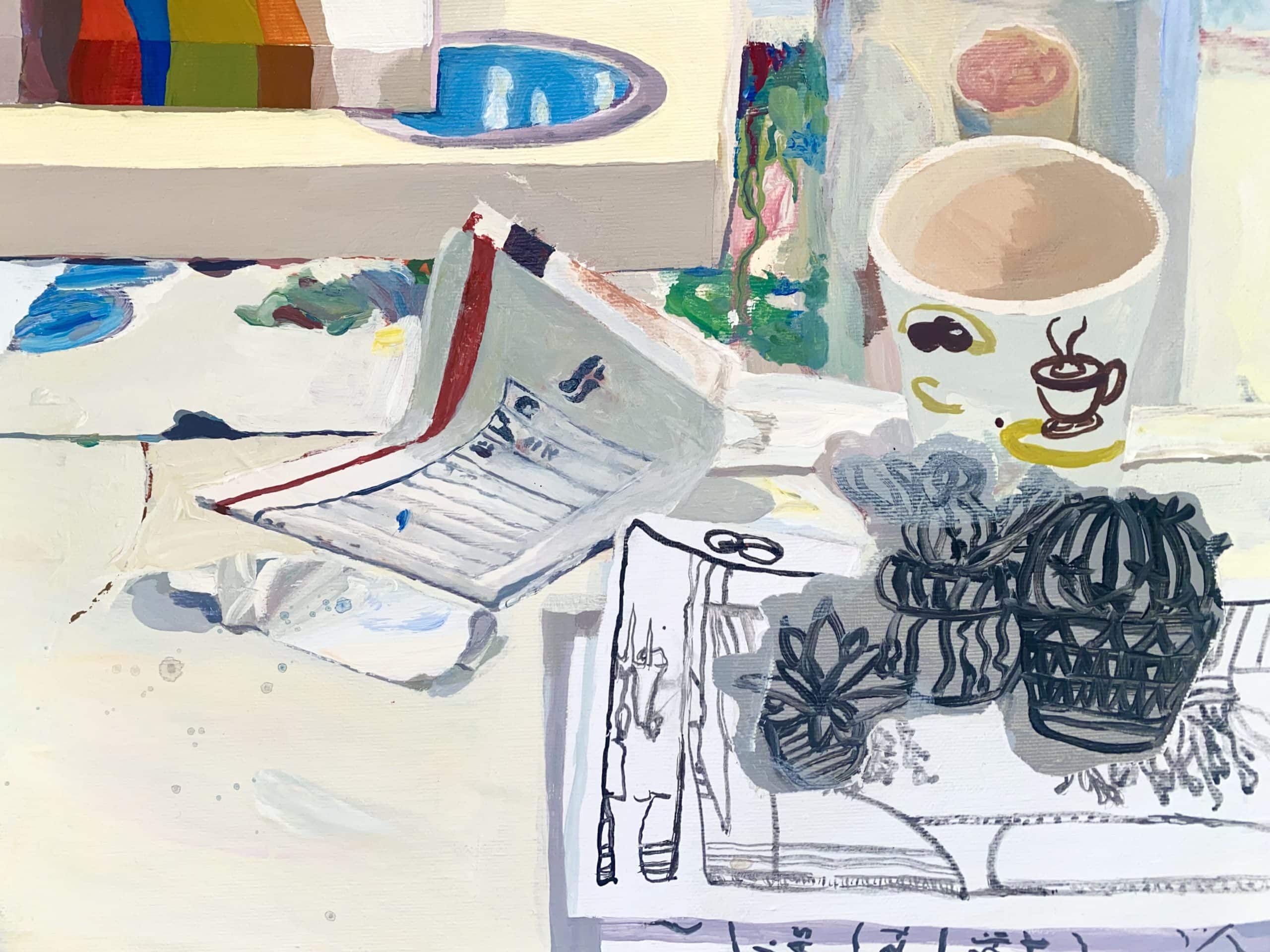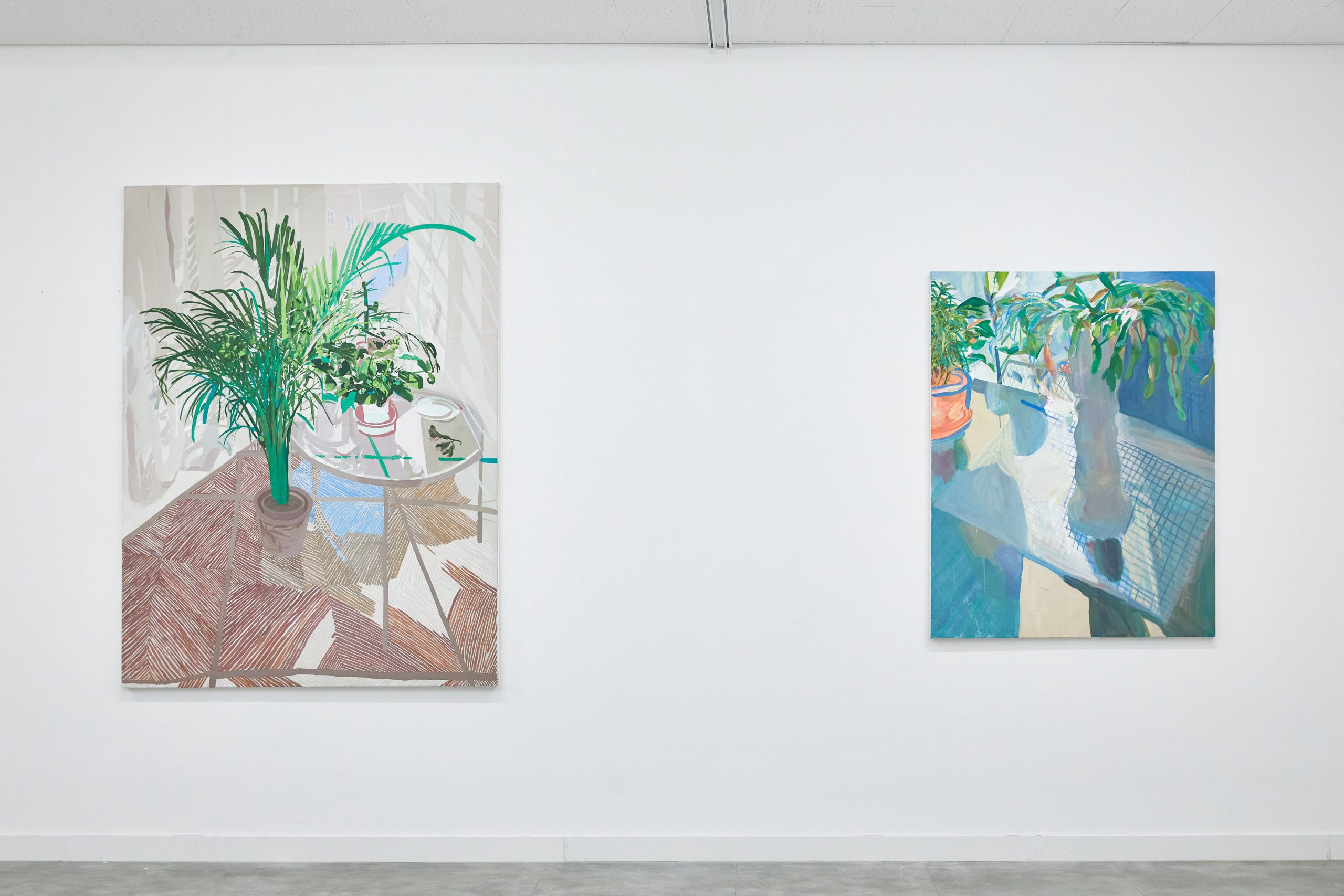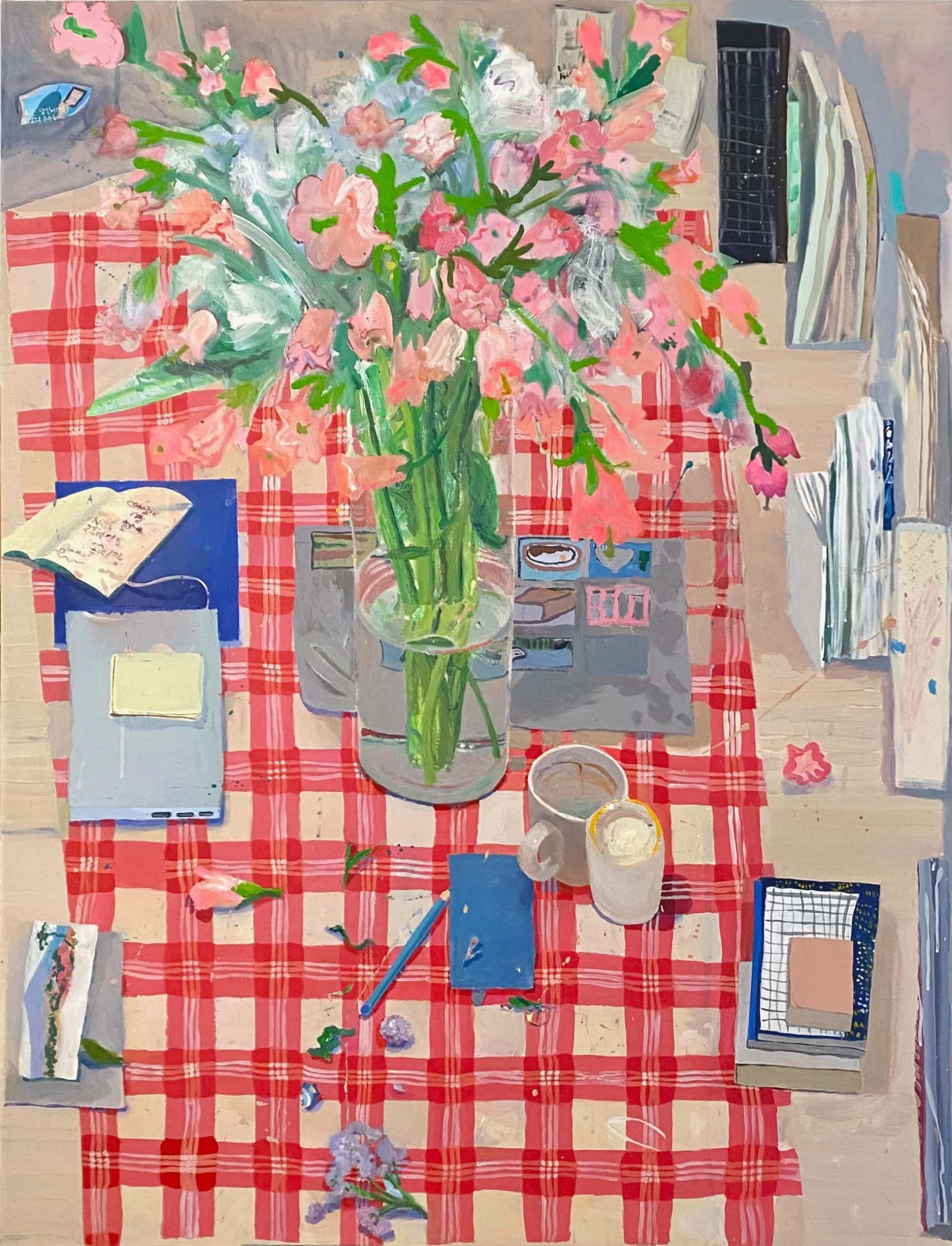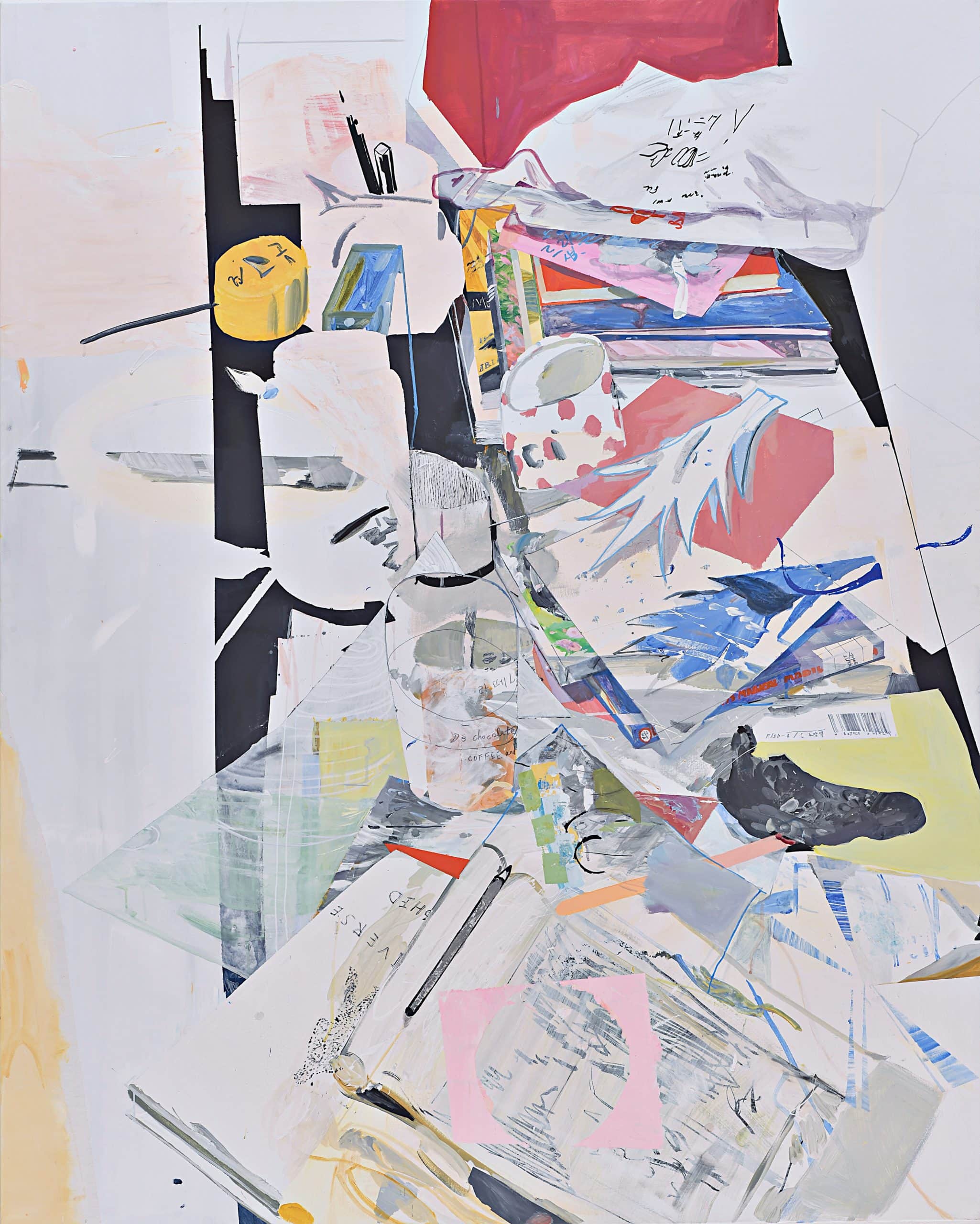Jung Soo Cho is a South Korean artist born in Seoul. Be it a specific color, palette, a word, or an image, an object, her artistic work always starts by finding an initial point for the painting from her daily surroundings. She draws symbols and objects that nurture personal and collective memories to emerge. Her research reflects the nomadic feeling she feels while moving from country to country, between the familiar and foreign. Ultimately, her paintings have a diaristic approach where collage like techniques express the artist’s search for fragmentation as an experienced condition.
Ilaria Sponda: How do you negotiate space as a painter? As an observer of the space you work in or live or someone who, it seems to me, seeks to engage their full arsenal as a human being?
Jung Soo Cho: During the process of painting- there’s quiet yet urgent, joyous happenings of translation, transformation from the actual space(s) to another- two dimensional, still “spaces” of the paintings. I like to combine different kinds of reflection, of light, sound, with the imagery, during the painting process. More than often, the works are defined by the nature, character, temporality of the spaces where they were made. I think that the uniqueness of painting is that I can be where the past, present, and future overlap on the surface of the canvas as I build up the layers of the painting. While painting, I do seek to engage my arsenal as a human being.
In recent years, I have been participating in 3 artist residency programs in Milan and Berlin. While surrounded by daily environment that is dissimilar to familiar, I was able to re-contextualise my painting practice on subjectivity of everyday life. Through Painting, I find my time in the workspace as an observer, but also traveler, seeker, explorer, wanderer.
IS: You look like a composer interested in the kinds of spatial, memorial and other relations that one wants to take note of as a first-order encounter with a new site. Is it an encounter starting with a compositional idea or figuration of colours and forms?
JSC: There are times when things that are easily overlooked in surroundings catch my eyes and make me to observe them carefully. I am interested in reassembling objects and things in everyday life by painting them. In particular, large and small rediscoveries in symbols used in familiar urban systems or images consumed on a daily basis become materials, and also a starting point for each painting. The starting point of a painting, which is different for each work with specific colours, palettes, words, photos, images, objects, etc., gradually becomes blurred or clear as time passes in the process toward completion. My work is like a diary or weather forecast in that it is an attempt to capture and embody daily changes.
IS: What attracts you in plants and objects you find around your lived environment?
JSC: I am fascinated by the small changes of plants, of colors, texture, shapes subtle notion. I am attracted to the plants in places, non-places in the cities.
In the café, streets, airport, street, unspecified places of cities, almost everywhere I can find plants, non/wild, alone or in groups. I take time to observing at them. While the process of painting, plants and objects break away from the object and start talking to me, and further, I project myself through them.
IS: I see you have quite a few books around your studio. What are you currently reading?
JSC: This is a list of books I am reading and re-reading at the moment. They are majorly connected to the works that I have recently realised: The Art of Flower Arranging by Marian Aaronson; The Joy of Walking written by Suzy Cripps – (Korean Translated Version, Translated by 윤교찬, 조애리); Documents of Contemporary Art: Memory, Whitechapel Gallery Edited by Ian Farr; Les Iles by Jean Grenier (English translated version); Brief Notes on the Art and Manner of Arranging One’s Books by Georges Perec.
IS: What’s the place that has inspired you the most?
JSC: It is studio for me, where the most I’ve been inspired by. Also, I regard my diary as a place, where I write about not only the painting practice but any thoughts that come through every day.
IS: The artwork you’re most attached to?
JSC: I know it will change soon, but for now, the one that I am mostly attached to is
Layers of Memories 기억의 겹들, Acrylic, Gouache on Canvas, 120x100cm, February 2024
Layers of Memories, is a still life and self- portrait at the same time, recently made during the time in Milan Viafarini artist residency. The episodes in the shared studio every day are drawn as objects. Each of the object-flower, coin, sculpture, an image, a shell, books, etc. were collected by the fellow artists, on their choices. Objects featured in the painting are- Marta’s cactus, Laura’s shell, Maria Maaneskiold’s grandmothers’ book, Valeria’s tear sculptures, Valerio’s fortune cookie package, one euro from Mattia, Maria Pilotto’s family photography. In this painting process of recalling collective and personal memories, I thought of the horizon where the so-called mundane, and the extraordinary collides.
